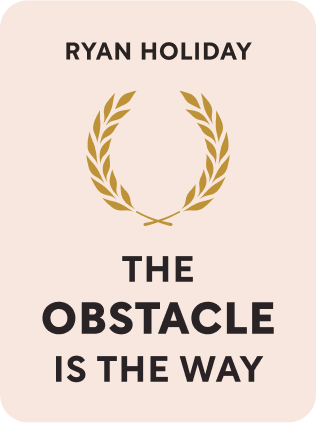

This article is an excerpt from the Shortform book guide to "The Obstacle Is The Way" by Ryan Holiday. Shortform has the world's best summaries and analyses of books you should be reading.
Like this article? Sign up for a free trial here .
What is Stoicism’s take on emotions? How would a true Stoic deal with an unhelpful emotion?
In Stoicism, emotions aren’t something you are supposed to mute or suppress. The Stoic approach is to feel the emotions but to take a pragmatic approach to deal with them. When unhelpful emotions take over, feel them but don’t be swamped by them—control them.
Keep reading to learn about Stoicism’s take on emotions.
Emotions and Stoicism: Feelings Are Fine
Stoicism isn’t about muting or suppressing negative emotions. Rather, it’s about redirecting focus when unhelpful emotions take over. By doing so, you can focus your energy on solving problems rather than reacting to them. This can be learned with practice.
Preventing Panic in Space
In the early years of the space race, NASA focused on training astronauts in one skill above all others—controlling their emotions so they would stay calm in any situation. When driven by fight-or-flight instincts, people stop thinking, deviate from rules and procedures, and make mistakes. In space, such a reaction could be fatal.
To train astronauts to control their emotions, NASA simulated numerous crisis scenarios and drilled astronauts over and over in how to respond, until the right responses became second nature.
Dealing With Emotions: The Stoic Way
Most of us react to everyday events—for example, addressing a crowd, dealing with an angry customer, getting an email from the boss or a call from the bank—with more stress or panic than astronauts experience in space.
Here are some ways to control your emotions and redirect your focus:
- Consider what you’re missing: In The Gift of Fear, Gavin de Becker suggests asking yourself what you’re choosing not to see by letting your emotions take over. What are you missing by choosing fear and worry?
- Ask whether your emotions are helping: Is getting upset giving you more options? (Usually, it doesn’t.) It’s OK to feel it but then set it aside so you can deal with the problem.
- Remind yourself that you—not your emotions—are in control: Tell yourself, “I understand what’s really happening here. I won’t get upset or panic because it won’t help. I know what to do.”
- Counter emotions with logic: Make statements and ask questions that get to the heart of the problem. For example, when your business loses money, tell yourself: “All businesses lose money at times. Haven’t you dealt with worse losses?”
- Assert control and refuse the unfavorable outcome: Tell yourself: “I won’t be upset; I refuse the urge to give in to fear; I refuse to acknowledge weakness or defeat.”
- Accept that you have no choice but to suck it up and get on with the task. There’s no one but you to do it; you don’t have time to waste on getting worked up; others are counting on you.
It’s also useful to remember that, regardless of the situation, there’s always something you can do—a countermove or another path. So don’t get worked up, be patient, and you’ll find the way.

———End of Preview———
Like what you just read? Read the rest of the world's best book summary and analysis of Ryan Holiday's "The Obstacle Is The Way" at Shortform .
Here's what you'll find in our full The Obstacle Is The Way summary :
- Why you should think of any obstacles as opportunities
- How Stoicism can show you the way to overcome challenges
- How Theodore Roosevelt's struggle with asthma prepared him for future struggles






